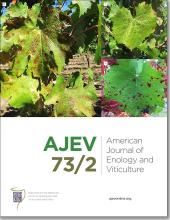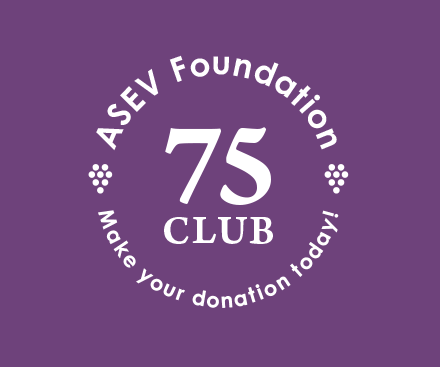Abstract
Three different Pinot noir clones (115, 777, and 828) from the Central Coast of California were subjected to different maceration temperature regimes for 14 days using triplicate fermentations (Cold: 10°C; Hot: 25°C; and Variable: 10°C on days 0 to 7 and 25°C on days 8 to 14) to determine the effect of maceration temperature on color and phenolic extraction across all three clones over two consecutive vintages (2019 and 2020). In 2019, the Hot treatment and the hot portion of the Variable treatment were obtained by exposing the fermentors to direct sunlight, while in 2020, this was achieved by artificial heating. Spectrophotometric analyses showed that at time of pressing, extraction of total phenolics for Cold, Variable, and Hot temperature treatments was 723, 894, and 1031 mg/L, respectively. Similar trends were observed in Cold, Variable, and Hot treatments for anthocyanins (208, 265, and 284 mg/L, respectively), tannins (68, 81, and 123 mg/L, respectively), and polymeric pigments (0.40, 0.46, and 0.51 absorbance units [AU], respectively). Similarly, the average monomeric anthocyanin concentrations of both vintages’ Cold, Variable, and Hot treatments analyzed via high-performance liquid chromatography were 210, 269, and 267 mg/L, respectively; that of flavonols were 26, 28, and 30 mg/L, respectively. Color analysis showed a negative correlation with temperature for CIELab lightness values across Cold, Variable, and Hot treatments (86.69, 84.89, and 83.37, respectively), and positive correlation for red hues (16.05, 17.73, and 20.50, respectively) and wine color (AU 420 + 520 + 620 nm; 0.48, 0.54, and 0.60, respectively). Finally, differences in heating method between the two vintages (direct sunlight in 2019 and a temperature-controlled room in 2020) was a major factor in phenolic extraction.
- Received August 2021.
- Revision received November 2021.
- Revision received November 2021.
- Accepted December 2021.
- Published online April 2022
- Copyright © 2022 by the American Society for Enology and Viticulture. All rights reserved.
Sign in for ASEV members
ASEV Members, please sign in at ASEV to access the journal online.
Sign in for Institutional and Non-member Subscribers
Log in using your username and password
Pay Per Article - You may access this article (from the computer you are currently using) for 2 day for US$10.00
Regain Access - You can regain access to a recent Pay per Article purchase if your access period has not yet expired.










